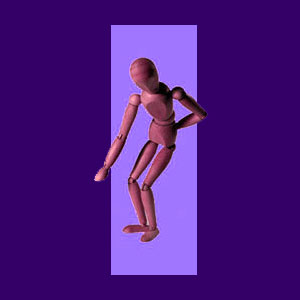
Congenital scoliosis is an unusual spinal curvature condition which affects patients before they are even born. Scientists do not understand exactly what causes many cases of scoliosis, although they do know that heredity plays an important role in the development of this condition.
Abnormal side-to-side (and front-to-back) spinal curves are relatively common in the general population. Most of these atypical curvatures are mild to moderate, while only a small percentage is severe enough to warrant treatment. Unfortunately, in cases of congenital spinal curvature, the circumstances are ideal for truly extreme scoliosis to develop as the child grows. It is crucial to remember that the younger a person is when they first demonstrate a side to side curvature, the longer the curve will have to develop until the spinal column is completely finished growing.
This essay details the existence of inborn scoliosis conditions in infants.
What is Congenital Spinal Curvature?
Scoliosis is a side-to-side curvature of the spine and is always judged to be an atypical finding in the human vertebral column. In the case of people actually born with the condition, there is also a higher likelihood of other problematic disorders, such as spina bifida or Cerebral Palsy.
Doctors do not completely understand the link between spinal curvature and other fetal developmental concerns, but there is certainly some correlation between the two. However, most patients who are born with scoliosis do not have any other troublesome conditions or defects in their spines.
Congenital Scoliosis Facts
There is a much closer ratio of males to females with congenital or infantile scoliosis than with other forms of atypical spinal curvature. Scoliosis is a condition that is often not discovered until much later in life. Many people never even realize they have it at all, until routine health checks find it at an older age.
Mild to moderate scoliosis is not inherently painful or symptomatic in any way. Most spinal curves are inconsequential and will have absolutely no effect on the individual or their functionality. Only a small percentage of spinal curves require active monitoring and even less require drastic treatment. As mentioned earlier, in congenital cases where the curve worsens as the child ages, the potential exists for the worst possible scenarios and degrees of symptomatic expression. There is no guarantee that a congenital curve will escalate, but if it does, providing effective treatment may be a difficult task.
Congenital Varieties of Scoliosis
Since patients are literally born with this condition, there is a decreased chance of developing a mindbody back pain syndrome based upon the diagnosis. Patients who are born with scoliosis (or many other atypical spinal issues) do not know anything different and usually accept the condition far better than people who develop it as adolescents or adults.
It is still important that any treating physician give the growing child confidence and security by making sure they understand the specifics of their diagnosed condition. A child with a positive mental state will grow up to be strong and healthy, regardless of their mild to moderate scoliosis. Hopefully, for children with ever worsening curvatures, treatment will be effective and help them to lead full and normal lives, even if surgery is indicated.
I was diagnosed with scoliosis at the age of 16 and was devastated by the prognosis of ongoing painful symptoms given to me by my chiropractor. If I had known then what I do now, I might have never suffered the 18 long years of pain which tore my life apart and brought me to a very dark place indeed.




